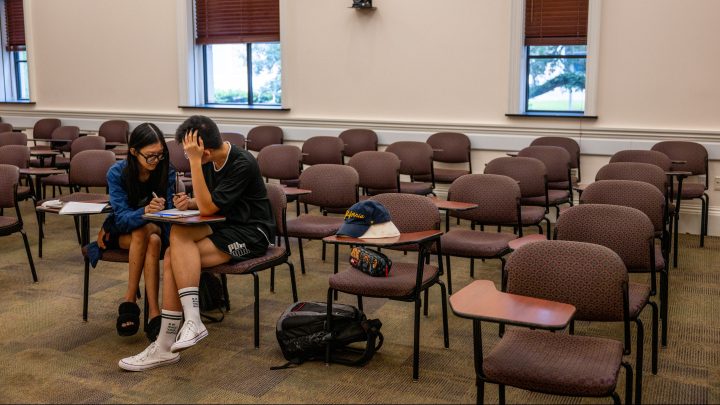
Biden student loan plan would let borrowers pay less, get forgiveness faster
Biden student loan plan would let borrowers pay less, get forgiveness faster

Income-driven repayment plans have been around in higher education for decades. The idea is to let people who earn less pay less on their student loans. But that relief has not always reached borrowers.
On Tuesday, the Joe Biden administration is proposed regulations to make it easier for borrowers to pay less on a regular basis, but also give those who take on relatively small amounts of debt the ability to shed those debts sooner.
Melissa Haeffner paid for most of her undergraduate education herself, but she did have to take out a $6,000 loan. Since graduating in 2012, she’s paid $85 a month toward the debt and estimates she’ll be done in 10 years.
“It’s kind of like if I took out a loan for a car for $6,000, and I’m still paying on it 20 years later, when I don’t even maybe own the car anymore,” she said.
Under the proposed regulations, people like Haeffner — who borrowed less than $12,000 for their undergraduate education — could qualify to have their debt forgiven after making regular payments for a decade.
In the current income-driven repayment plan, forgiveness takes 20 years.
“So what our proposal would do is have a shorter period of repayment for smaller loans so that you wouldn’t have to stay in debt for 20 years if you only borrowed a few thousand dollars,” said James Kvaal, undersecretary of the Department of Education.
Kvaal pointed out that many people who borrow small amounts for college don’t finish their degrees, which means they may find it harder to pay their debts back.
“That leaves students in the worst of both worlds. They have debt, but they didn’t earn that degree that will qualify them for additional jobs,” he said.
It makes sense to align the amount borrowed with the time it takes to be forgiven, said Sandy Baum, a higher education economist at the Urban Institute. “If you’re starting college, it certainly should be a question that if you borrow $50,000, you’re gonna have more of a repayment burden than if you borrow $20,000.”
For example, people who attend community college tend to borrow less. The Department of Education estimates that 85% of community college borrowers would have their debts wiped out under the new plan.
This can also remove psychological barriers to attending college, said Mark Huelsman with the Hope Center for College, Community, and Justice at Temple University.
“There are some students who don’t begin college at all or drop out because of the very rational fear of needing to pay off their student loans or being stuck in debt for life,” he said.
People with higher incomes could also qualify for the shorter repayment period, but they’d have to pay more each month than people who earn less.
There’s a lot happening in the world. Through it all, Marketplace is here for you.
You rely on Marketplace to break down the world’s events and tell you how it affects you in a fact-based, approachable way. We rely on your financial support to keep making that possible.
Your donation today powers the independent journalism that you rely on. For just $5/month, you can help sustain Marketplace so we can keep reporting on the things that matter to you.











